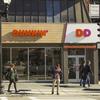A Westminster sewage collection network in so overtaxed and outdated, the City Council has enacted a year-long moratorium on new development that would feed into it.
The health and well-being of city residents is believed to be at stake.
The 22-mile-long Big Dry Creek Interceptor Sewer system collects sewage and wastewater from about two-thirds of the city of more than 110,000 people. It serves nearly all of Westminster north of West 92nd Avenue and south of 124th Avenue.
After being briefed about the sewer’s capacity, age and condition issues last week, the City Council on Monday night unanimously adopted an emergency ordinance that freezes acceptance of new, large-scale development proposals in the area served by the Big Dry Creek network for up to a year.
“The (sewer) system is now at a trigger point of risk that warrants both near-term mitigation measures, as well as longer-term expansion to support continued development,” a staff memo recommending the emergency ordinance read. “Not addressing these system constraints is believed to compromise the health, safety, and welfare of the community with a level of risk that is not acceptable.”

The moratorium, which went into effect at noon on Tuesday, is designed to allow a consultant to inspect the sewer, collecting information that will be put to use in a project to fix, expand and replace portions of it, according to a city memo. City staff are expected to work simultaneously to pinpoint spots for where incremental or innovative fixes could be employed and make plans for easements and land acquisitions that might be required by future repair and replace projects. One idea floated at Monday’s meeting was reactivating decommissioned sewer lines in the area to help with capacity.
The Big Dry Creek system was first assessed in 2012, then again in 2015, according to the city staff. Those studies found “several segments” of the system were nearing the end of their lifespan or were not large enough to handle all of development and growth in the city. The city made plans to overhaul the system starting in 2019 director of public works and utilities Max Kirschbaum said Monday.
But an assessment done earlier this year — when factoring in projects in the city’s pipeline and flows those could contribute to the sewer system — painted a dire picture. Kirschbaum said the system is already running the risk of a sanitary sewer overflow, an event where raw sewage escapes from a sanitary sewer.
Westminster’s sewer flows have increased by 40 percent since 2008, city officials said. The Big Dry System was dates back to the 1970s, before the city went through several waves of population growth.
Related Articles
-
Broomfield-based Noodles & Co. initiates public stock offering
-
Dockless scooters could return to Denver as soon as Friday
-
The rent might be high in Denver, but there’s a reason, report says
-
Denver residents say wealth starts at $2.4 million
-
Texting can be positive and powerful, according to scientists
The moratorium applies to new development applications that would increase flows into the Big Dry Creek network. Home renovations or projects that will not add to the sewage flows will not be subject to the freeze, officials said.
Applications and pre-applications submitted prior to the moratorium taking effect will be honored. But developers who fail to follow up a pre-application meeting with more complete planning documents within six months will see their projects expire, according to the city.
Even if a developer has city approval to move forward with plans, they may not be given access to the sewer system. Westminster’s municipal code dictates wastewater service commitments do not take hold until a building permit is pulled. That means builders in the affected area who goes in for building permits may be told the sewer network does not have the capacity to serve their projects. Access to the sewer system will be assessed and awarded on a first-come, first-served basis to ensure fairness, city officials say.
Jenni Grafton, the city’s acting economic development director, estimated there are between 30 and 40 projects in the affected area that could be in line to pull permits. Some of the city’s premier mixed-used neighborhoods and shopping areas will not be impacted by the development freeze. The Downtown Westminster project, rising where the Westminster Mall once stood, and the Westminster Station transit-oriented development going up around the city’s B-Line train stop, are served by a separate sewer network. The same is true for its north Interstate 25 and Huron Street business district. Those areas include the St. Antony North Health Campus and the Orchard Town Center shopping area.
Several developers that have projects on tap in Westminster came to Monday’s meeting to urge the council to move along their projects. Council members sought to assuage fears.
Councilwoman Shannon Bird said, “We are not closed for business.”
The city will lift the moratorium before 12 months if possible, but its sewer contractor is expected to need nine months to assess the system. Mayor Herb Atchison preached patience.
“We need to get the study done first,” he said. “How big is (the problem) and how long do we think it will take us to fix it? That’s not going to happen in 12 months.”
It is unclear how much it might cost Westminster to address the emergency, but city staff did say where they expect much of the money to come from: sewer rate hikes and municipal debt.

